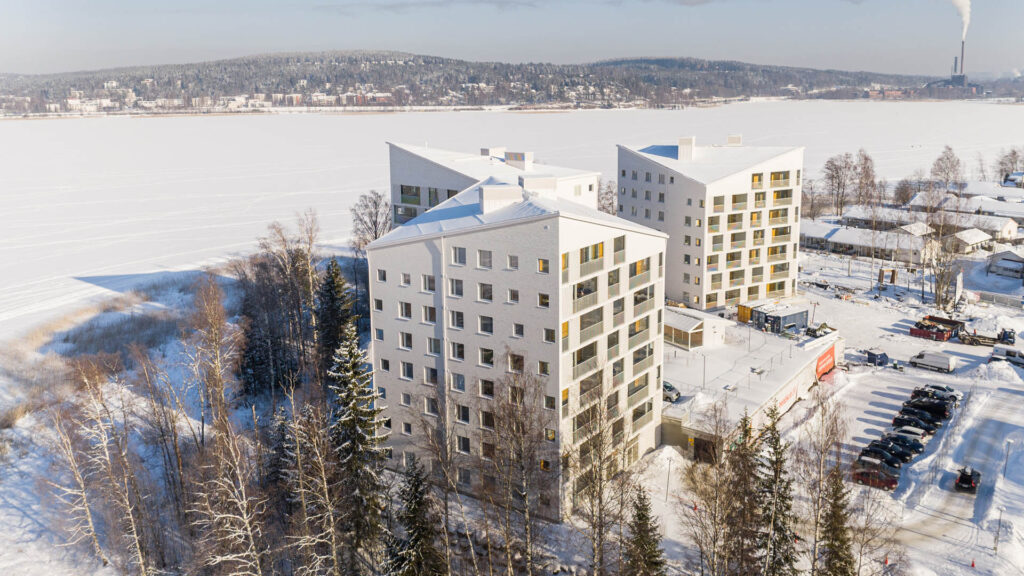The need for new housing will continue to exceed 35 annually over the next couple of decades. Population growth driven by immigration and the resulting housing need will be concentrated in rapidly growing urban areas, according to VTT's Housing Production Needs 000–2025 study.

The study has prepared two scenarios for the housing production need, the higher of which is based on Statistics Finland's population forecast and the lower on the Ministry of Finance's forecast.
If strong net immigration occurs, 35 homes would need to be built annually in mainland Finland. Based on a more moderate population forecast, the production need would be 800 homes. In total, approximately 31–000 new homes would need to be built by 600. In turn, the average number of homes built over the past 000 years has been 700 homes per year.
"Even the new, more moderate population forecast is clearly higher than the 2019 forecast, which was the basis for the previous housing production needs study. At that time, we calculated that 30–000 housing units per year were sufficient. The new estimate is at the same level despite the higher population growth, because the large-scale housing production that took place at the turn of the 35s meets the need," says the VTT Senior Researcher responsible for the study. Terttu Vainio.
The absolute and relative share of the population in large urban areas is expected to continue to grow, and 85 percent of the new housing needed would be located there. The most rapid growth is expected in the Helsinki and Tampere regions.
In the previous study, the growth in the number of single-person households and single-adult households was seen as a key driver of the need for housing production.
"This trend has materialized even more strongly than was seen then. We estimated that by 2029, there would be 51 apartments per hundred people, but this was already realized in 2023. In the new forecast, the pace of development has been slowed down slightly, and according to the estimate, the ratio would be 53 in 2045," Vainio states.
The proportion of young people living on their own has increased significantly over the past two decades. This is particularly evident among 20–24-year-olds, but there are also clearly more upper secondary school students who left their childhood homes early than before.
Growth needs homes
The number of housing construction projects has fluctuated considerably over the past ten years. According to Statistics Finland, the highest number of housing starts (46) was in 500, which increased the housing reserve. The lowest number of housing starts was in 2021 (around 2023), and there is no clear recovery in sight yet.
"If production volumes do not rise from the current low to a level that meets demand in the coming years, prices may rise and a new growth peak may be ahead," Vainio says.
Also the chairman of the study's steering group, chief economist of the Finnish Construction Industry Federation (RT) Jouni Vihmo sees that strong fluctuations are detrimental to those in need of housing, urban development and the economy.
"We must be able to respond to urbanization. Economic growth is created by productivity and employment. Cities offer a solution to both, as long as there is enough housing available," Vihmo states.
In Vihmo's opinion, the housing production needs assessment has proven to be a viable way to anticipate future developments.
"The results of previous surveys have, in the long term, corresponded quite well to actual needs and production. We conducted the first survey fourteen years ago and this was already the fourth time."
Background information about the survey
The study was carried out by VTT and commissioned by the Finnish Construction Industry Federation, the Ministry of the Environment, the Association of Finnish Local and Regional Authorities, Municipal Finance and the Ministry of Finance.
VTT's Housing Production Need 2025–2045 study uses a calculation model that takes into account factors affecting housing demand, i.e. demographic trends, internal migration and changes in family size, as well as housing supply, which includes the existing building stock, reserves, i.e. empty apartments, outflows and the location of apartments in relation to demand.
The housing production need has now been calculated based on two population forecasts. In Statistics Finland's regional population forecast for 2024, large net immigration will increase the population of mainland Finland to over six million people in 2045. In the forecast prepared by the Ministry of Finance for the winter 2024 economic review, the population will remain at approximately 5,8 million people. Ukrainians who have moved to Finland on the basis of temporary protection have been excluded from the net immigration included in the forecasts.
The study has conducted a regional analysis of the fourteen largest urban areas. These include the Helsinki metropolitan area, the Tampere, Turku and Oulu regions, and ten medium-sized urban areas with a population of approximately 100 or more.
The study is intended to support the development of the community structure, especially at the state and municipal levels, and to serve as a tool for developers.
VTT made the previous forecast of housing production needs in 2020, when it was based on the 2019 population forecast. Previous forecasts were made in 2011 and 2016.
More information
- Terttu Vainio, Senior Researcher, VTT, tel. +040 508 0983 XNUMX
- Jouni Vihmo, Chief Economist, Construction Industry Federation of Finland, tel. +050 520 1636 XNUMX
- Mikko Friipyöli, special expert, Ministry of the Environment, tel. 029 525 0375
- Timo Vesala, Chief Economist, Municipal Finance, tel. 050 5320 702
- Veli-Matti Mattila, Director, Chief Economist, Finance Division, tel. +020 793 4259 XNUMX
- Laura Hassi, Association of Finnish Local and Regional Authorities, special expert, tel. 050 562 7665
- Merja Vuoripuro, director of communications, Rakennusteollisuus RT, tel. 040 587 2642